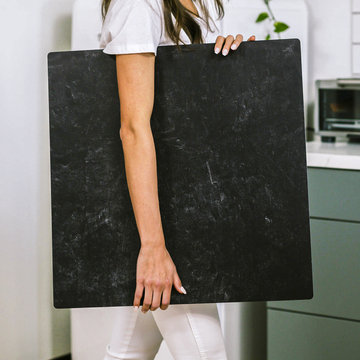As I set up my lighting for a recent client's artisanal chocolate shoot, I found myself explaining why I was using a specific LED panel positioned at that particular angle. "This isn't just about making it bright," I told them. "It's about making those cocoa butter crystals catch the light exactly right."
After more than a decade photographing everything from steaming soups to meticulously plated Michelin-star creations, I've discovered that LED lighting technology has transformed food photography in ways many photographers haven't fully explored. Today, I want to share some of these insights with you.
Beyond Basic Brightness: Understanding the LED Advantage
Most photographers have switched to LEDs for their practical benefits - they run cool, consume less power, and last longer. But for food photography specifically, LEDs offer something far more valuable: unprecedented control.
Unlike traditional strobes or continuous lights, high-quality LED systems allow you to precisely manipulate:
- Color temperature (beyond simple warm/cool adjustments)
- Light intensity (with flicker-free dimming)
- Directionality (through their compact form factor)
This level of control transforms how we can present food through photography.
The Secret Ingredient: Color Rendering Index (CRI)
Here's something many photographers overlook: while we obsess over color temperature (measured in Kelvin), it's actually the Color Rendering Index (CRI) that determines how accurately colors are reproduced.
Pro tip: For food photography, never settle for LED lights with a CRI below 95.
Why? Because food is all about subtle color variations. The difference between perfectly caramelized and slightly burned is a narrow color spectrum. The gentle gradient in a rare steak tells a story about its preparation. When your lighting has a lower CRI, these nuances get lost - making strawberries look dull, herbs appear muted, and golden-brown pastries seem lifeless.
I learned this lesson the hard way when a client rejected an entire bread product shoot because the crusts appeared grayish rather than the rich amber they were in person. The culprit? A budget LED panel with an 85 CRI.
Spectral Tuning: My Secret Weapon for Texture Enhancement
Few photographers discuss this technique, but modern high-end LED panels allow you to selectively adjust specific color wavelengths to enhance particular food textures.
In my studio, I've found that slightly boosting the yellow-orange range (570-590nm) makes pastries appear more flaky and textured. You can almost "feel" the delicate layers of a croissant through the image.
Similarly, when I'm shooting fruits, I'll often add a subtle boost to the blue spectrum (450-480nm) which makes moisture more apparent - suddenly those blueberries look juicier and fresher.
Multi-Point Micro Lighting: Breaking the Single Source Paradigm
One of the greatest advantages of LED technology is how compact it can be. I've developed what I call "micro-lighting" - using multiple small LED sources strategically placed around food subjects.
Traditional food photography typically uses one main light with perhaps a reflector or fill. But food is three-dimensional and often has complex topography. Think about a bowl of ramen with noodles, broth, and toppings all needing different lighting approaches.
By positioning 3-5 small, adjustable LED lights around a dish, I can create highlights that follow natural contours, emphasizing texture and dimension in ways impossible with larger light sources.
The 270° Illumination Technique: A Step-By-Step Approach
Here's a technique I've developed that consistently delivers exceptional results for most food subjects:
- Position your main LED light (with a softbox) at a 45° angle to the subject
- Place two smaller LED lights with diffusers at approximately 135° angles on either side
- Add a fourth micro LED (1-3 watts) directly above the subject for specular highlights
- Optional: Use a small LED strip light underneath a translucent surface for subtle bottom illumination
This setup creates wrapped, dimensional light that reveals texture while maintaining shadow detail - crucial for conveying the tactile qualities of food.
When I used this technique for a recent ice cream shoot, the client commented that they could "almost feel the creaminess" through the screen.
The Future: Programmable LED Sequences for Food Videos
As more content moves toward short-form video, the programmable nature of LED lighting becomes invaluable. Modern LED systems allow for pre-programmed lighting sequences that can simulate changing natural light or create subtle emphasis shifts during video.
For example, when filming a chocolate dome dessert with hot caramel being poured over it, I programmed a slight intensification of side lighting just as the chocolate began to melt and collapse. This subtle lighting change dramatically enhanced the visual impact of that pivotal moment.
Practical Recommendations: LED Kits for Food Photography
Based on my experience, here are some LED lighting setups worth considering for food photography:
For beginners:
- A single high-CRI LED panel (minimum 95 CRI) with a softbox
- A small LED wand for accent lighting
- Several white and black foam boards for reflection/flagging
For serious enthusiasts:
- A main LED panel with adjustable color temperature and intensity
- 2-3 smaller LED lights for accent and fill
- A flexible LED strip for creative backlighting
For professionals:
- A full RGB+CCT LED panel system with spectral tuning capabilities
- Multiple micro LED sources with honeycomb grids for controlled accents
- Programmable LED controllers for video sequences
Conclusion: LED Lighting as Your Creative Partner
LED lighting for food photography isn't simply a tool-it's a creative partner that can be precisely tailored to the specific qualities of each dish you photograph.
Whether you're a restaurant owner capturing your menu, a food blogger creating content at home, or a professional photographer looking to elevate your commercial work, understanding the technical capabilities of LED lighting can transform your food photography from merely attractive to genuinely compelling.
The best food photography doesn't just show what a dish looks like-it communicates how it would taste, smell, and feel. With the right LED lighting knowledge, you can create images that make viewers' mouths water and imaginations ignite.
What lighting techniques have you found most effective for your food photography? Share your experiences in the comments below!



